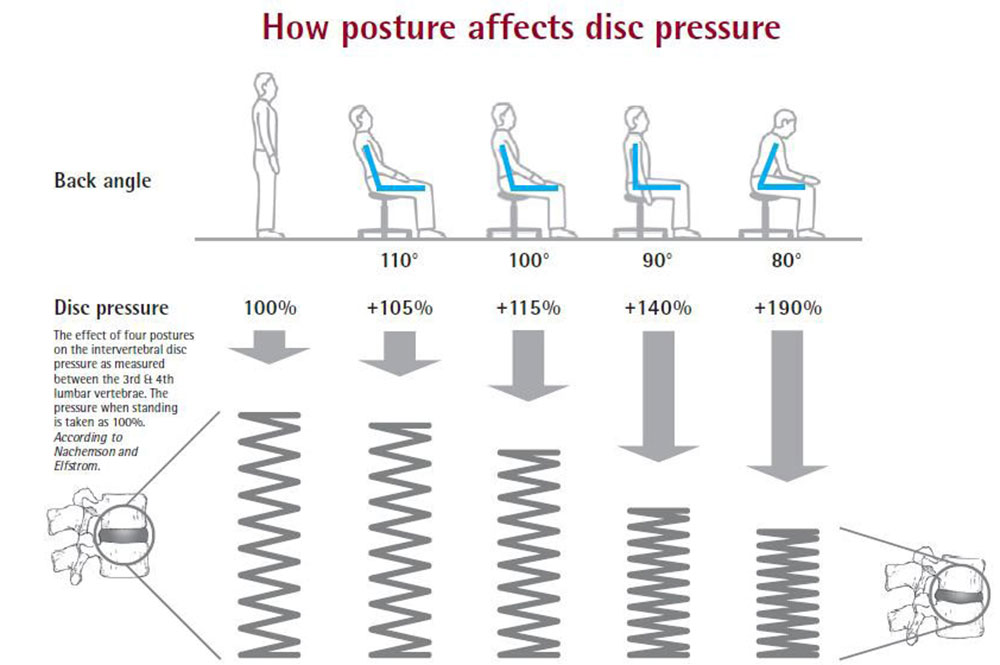As physiotherapists, we very often get asked “how should I be sitting at work to prevent my back from getting sore”? Low back pain affects around 80% of Australians at some stage in their life, and it is the most common workplace health complaint. With an increasing number of sedentary individuals with back pain within the workplace, there has been a growing interest into the causes of low back pain. Recent research has identified that sitting for long periods could perhaps be a major problem for your lower back health.
To put it simply, people who sit a lot have more lower back pain and earlier disc degeneration (Videman T, Nurminen M, Troup J. 1990). But if the type of work you do requires you to sit for long periods throughout the day, is there a better way to sit? An interesting study by Hedman and Fernie (1997) investigated the mechanical response of human lumbar spines to sustained loading in different sitting postures. Twelve lumbar spines were subjected to constant loading conditions while in either a flexed or extended seated posture. The results of the study revealed that there are greater anterior disc compressive forces and higher disc shear and posterior ligament forces in the flexed seated posture compared with the extended posture. However, regardless of the sitting posture, there was an increase in spinal loading and compression as compared to a standing posture. The authors concluded that the “minimization of disc shear, tolerable levels of ligamentous tension, lower disc loads and a balancing of facet impingement and articular facet forces were found to be characteristics of prolonged erect sitting in this study. Based on these results, one would expect that the extended seated posture would reduce exasperation of tissues as compared to flexed postures.”
So with this information, it would seem that sitting and low back pain are related but sitting with a more erect posture is more favourable for our long term lower back health compared with the flattened, flexed posture. But given that sitting for long periods with any posture results in increased spinal loading, frequent changes in position from sitting to standing is highly recommended in the prevention of low back pain and pathology. Regular changes in position every 45-60 mins is recommended if you are going to be sitting for an extended period during the day.

Sitting and Low Back Pain: The above diagram shows the relative disc pressures associated with different sitting postures.
References:
- Videman T, Nurminen M, Troup JDG. Lumbar spinal pathology in cadaveric material in relation to history of back pain, occupation, and physical loading. Spine. 1990; 15: 728-40.
- Hedman TP, Fernie GR. Mechanical response of the lumbar spine to seated postural loads. Spine. 1997; 22: 734-743.

